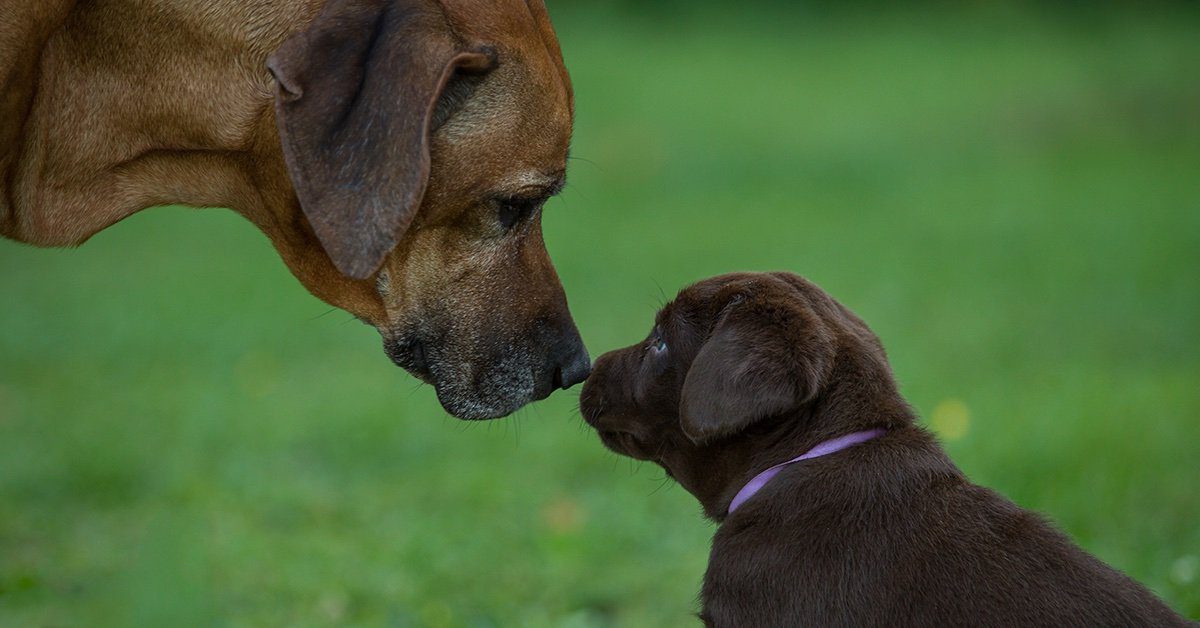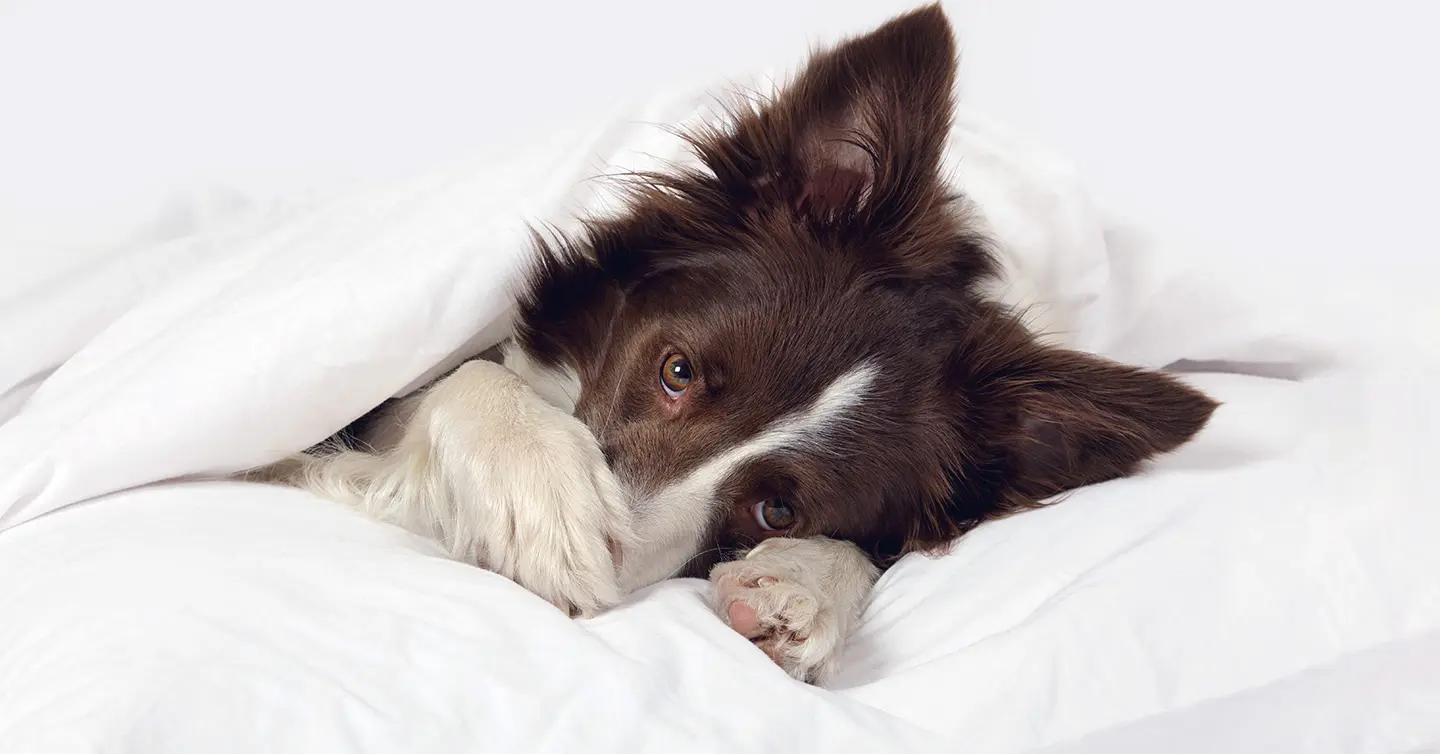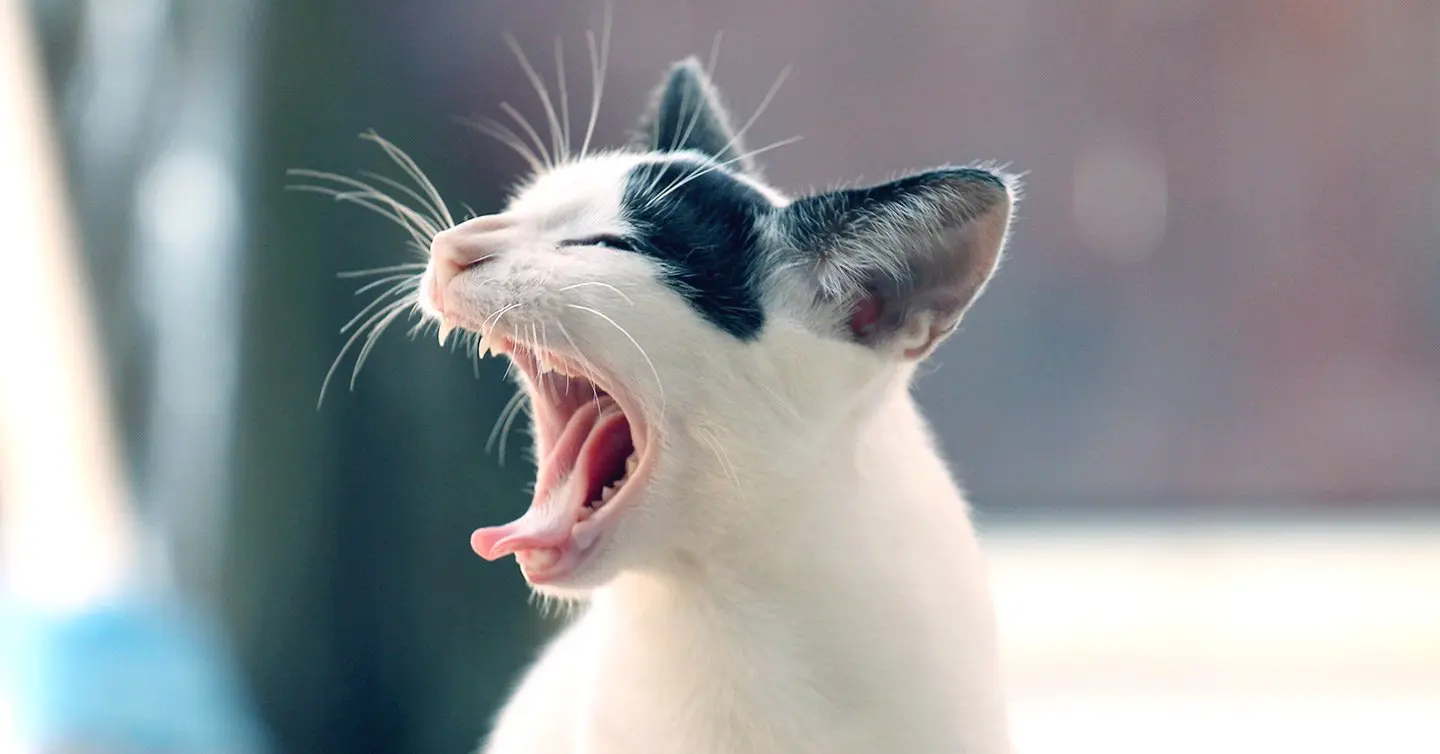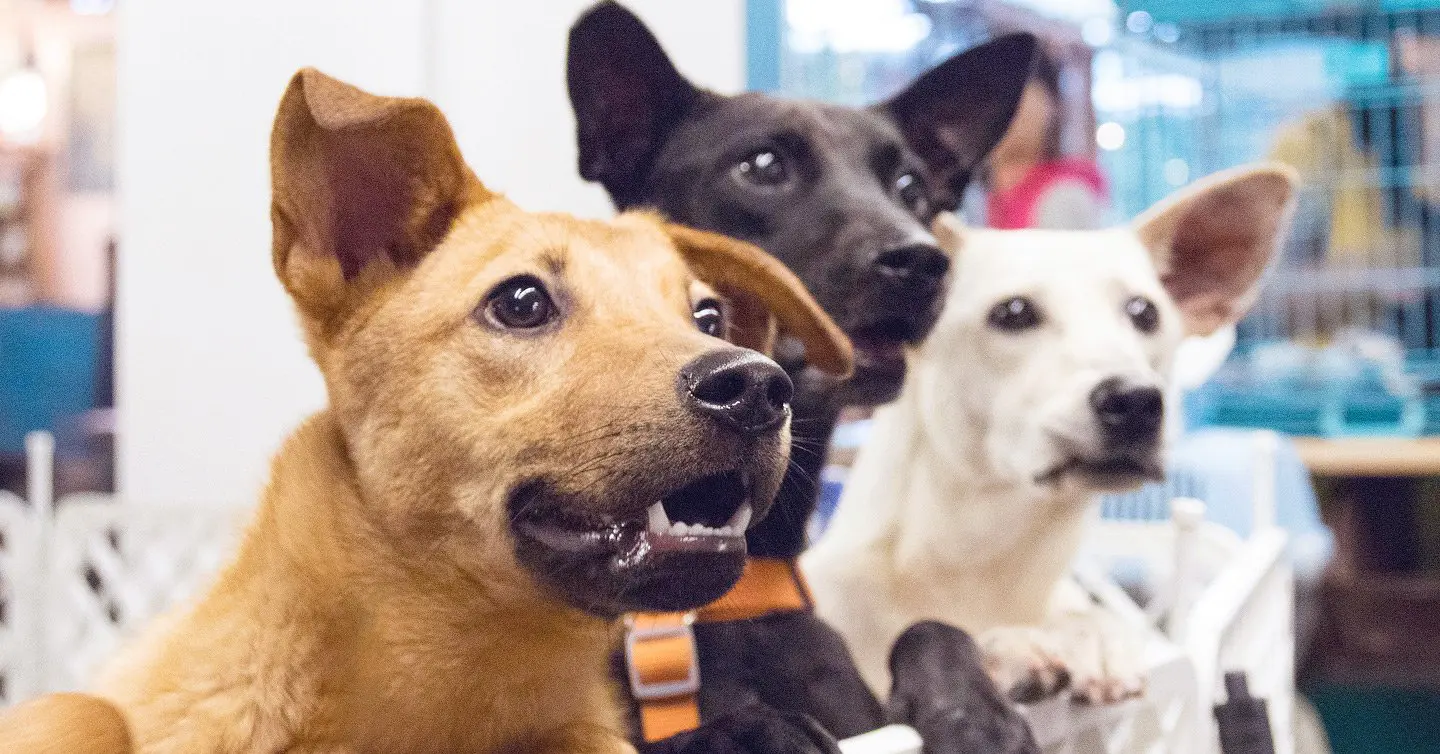Are you ready to bring home a new puppy but not sure how your current dog will react?
Luckily, dogs are social animals who enjoy the company of other dogs. However, some are naturally friendlier than others. Here are some tips for a smooth introduction if you’re worried about your resident dog having trouble accepting a new furry friend.
Preparing to bring puppy home
Vaccinations and parasite control
First things first, before you bring your new puppy home, make sure that both your puppy and your current dog are up-to-date on their vaccinations and parasite control, including fleas and worms.
A young puppy’s immune system is still developing and a senior dog may be susceptible to illness, so ensuring they’re both protected is vital.
Introduce your new puppy’s scent
Prepare your resident dog for their new neighbor by letting them sniff an object that has your new puppy’s scent on it. This way, when you introduce them in-person for the first time, your dog will recognize and associate the smell with your new arrival. Tip: Many breeders will give you a blanket or a towel that your new puppy has been cuddled up in – this is a great way to introduce their scent.
Anticipate resource guarding
Your puppy will have to learn lots of new rules, both yours and your older dog’s. Your dog may feel the need to protect their turf, which is natural, so you need to think ahead.
Are there objects your dog may feel possessive about? Think about food bowls, toys, bones, and beds. Put them away to avoid any aggressive or guarding behavior.
It’s also important that your new puppy have their own food bowls, bed, crate, and toys. Be sure to add these items to your new puppy checklist to help prepare for your new arrival.
Prepare an escape area
Puppies will look for anything to play with, including your older dog. Young puppies don’t have doggy socialization skills quite yet, so don’t be surprised if they jump and playfully nip at your older dog (which they may not appreciate at first!). It’s important that you give your older dog a quiet place where they can relax when they’ve had enough puppy playtime for the day.
A puppy playpen or kennel can also provide some separation when your older dog becomes overwhelmed, or your puppy becomes overstimulated. A puppy zone or playpen also provides a safe space where your puppy can take those all-important naps, and you don’t have to keep eyes on them at all times.
With these tips in mind, let’s discuss how to ensure a smooth introduction between your two canine kiddos.
Pet Pro Tip: New kitten owners often underestimate the long-term costs of veterinary care for a pet’s unexpected accidents & illnesses. Make sure you get your kitten insured as soon as possible!
The first meeting: Ensuring a smooth introduction
The first meeting between your resident dog and your new puppy should take place in neutral territory. Ideally, the area allows them to meet unleashed through a barrier like a chain-link fence or a gate. This lets them come nose-to-nose to get in some good sniffs while remaining protected.
If that isn’t possible, there are other options for creating a neutral space wherever you are. Rooms divided by baby gates or outdoor doggy playpens or kennels are great for introducing dogs for the first time.
Here are some tips for first introduction:
- No toys, balls, chews, or beds that belong to your current dog should be in the meeting area. This eliminates any territorial behaviors.
- Eliminate any distractions. This can cause anxiety, making a stress-free meeting very difficult. You should also check your anxiety levels as well. If your dog senses your anxiety, they can kick their protective side into gear.
- Have lots of healthy treats handy to reward both your older dog and your puppy for good behavior.
- Both dogs can be on loose or slack leashes. Tightly held leashes can make a dog feel like it needs to protect you. With both dogs on leashes, it’s easier to lead them away if one of them shows signs of anxiety or aggression.
- Have a family member or friend tag along for the introduction. You’ll each be able to focus on one dog at a time and be watching for signs of both good and bad behavior.
- For the initial meeting, 10 minutes is plenty of time to interact before giving them both a break to wander around and relax. Let them roam each time you sense they need a break.
Warning signs
Allow your dogs to sniff each other nose to nose. Watch for good intentions displayed by either dog and reward them with a treat and some praise. Growls, barks, whining, and snarling can mean many things. You’ll want to watch their body language and be prepared to separate them if you see warning signs.
Warning signs can include:
- Displaying teeth
- Posturing with a hunched back
- Standing fur along the back and neck
- Growling and snarling
If you spot any of these signs, you should separate your dogs and allow them to get to know each other from a distance. Removing them from the situation and walking the dogs at a distance will allow your older dog to observe, smell, and get to know the new puppy with less stress.
Good intention indications
Puppies will often lick the face and mouth of the older dog, showing submission (even through a barrier). They may also roll over onto their back. This is their way of saying, “Hey, I’m a little guy, so cut me some slack here.”
Your older dog may give the doggy bow – tail raised in the air, head down – showing they are happy to meet the new pup and ready to get to know them. Reward this good behavior with praise and treats. They’re on their way to becoming BFFs!
When both dogs are displaying good behavior, take them on a parallel walk together. Keep them separated in distance, but let them walk next to each other. Try to keep the leashes loose to let them explore the unfamiliar smells and sounds around them. If there was some anxiety in the initial meeting, this is a great way to expel some energy and let them return to a relaxed state.
After the neutral territory meeting, it’s time to move to home ground.
Re-introductions at home
Even though your new puppy and resident dog met on neutral ground, meeting again at home will be much different. Your older dog is welcoming a newcomer to their turf, which can be harder for dogs who are territorial. Your puppy may not associate the dog at the house with the same dog they just met at the park.
Once at home, re-familiarize the dogs with each other in the yard prior to going into the house. Use the same methods you used in the initial meeting and pay attention to dog behavior signs of warning or good intentions. Be generous with treats when you see good behavior.
Meeting in the yard is a wonderful time to play puppy games. Your puppy may not have basic puppy training down yet, but it’s a good time for your older dog to show off and get some individual attention while playing with their new companion.
When it’s time to go inside, leave your older dog outside. It’s better for your dog to come into the house when the puppy is already there. And if there are additional dogs for the puppy to meet, introduce each one separately, following the same process for the original meeting session.
When it’s time to go inside your home, take the puppy inside alone, leaving your resident dog outside. Allow them to explore their new environment on a leash. Show your new puppy the playpen and where their puppy pads are located (ideally in the playpen) then bring in your older dog. If you aren’t sure about how your dog will react, put a leash on them, but keep it loose.
You’ll want to keep close supervision on your dogs for a couple of weeks until they’re familiar with each other and getting along well. Don’t be surprised if you need to keep leashes on one or both of your dogs in those first few days or weeks.
During mealtimes, keep the dogs separated from each other. If you can’t feed them in separate rooms initially, keep the bowls at opposite ends of the room to avoid any food aggression.
Keeping the transition to a multiple dog household controlled and calm will help you create a comfortable environment for both your puppy and your resident dog. Before you know it, they will be tail-wagging BFFs.
10 steps to introduce your new puppy to your dog
To put it all together:
- Prepare your current dog for the new addition to their canine family by providing the puppy scent and setting up a puppy zone.
- Have a neutral place for your dogs to meet and keep tasty treats on hand.
- Provide a barrier that allows nose-to-nose sniffs.
- When your puppy and older dog meet face-to-face, expect butt sniffs and some grumbling, these are normal dog communications. Reward good behavior.
- Provide breaks from the introduction every 10 minutes so your dogs can relax.
- Parallel walks and playing puppy games during the first meetings keep distractions and anxiety to a minimum.
- Growls and grumbling can mean different things. Watch your dog’s body language!
- For the first few weeks, feed your dogs in separate areas to avoid food aggression.
- Be generous with treats for good behavior.
- Be on the lookout for dog and puppy fatigue. Use the puppy zone to provide rest for both dogs.
How you introduce your current dog to your new puppy in those first few days can make an enormous impact on their relationship for years to come. Remember, slow, safe, and respectful introductions make calm, happy buddies for life.




